
The Auckland Islands are an archipelago of New Zealand, lying 465 kilometres (290 mi) south of the South Island. The main Auckland Island, occupying 510 km2 (200 sq mi), is surrounded by smaller Adams Island, Enderby Island, Disappointment Island, Ewing Island, Rose Island, Dundas Island, and Green Island, with a combined area of 625 km2 (240 sq mi). The islands have no permanent human inhabitants.

The Chatham Islands are a New Zealand archipelago in the Pacific Ocean about 800 kilometres (500 mi) east of the South Island of New Zealand. The archipelago consists of about ten islands within an approximate 60-kilometre (37 mi) radius, the largest of which are Chatham Island and Pitt Island. Some of these islands, formerly cleared for farming, are now preserved as nature reserves to conserve some of the unique flora and fauna. As of 2013 the islands had a resident population of 600. The local economy depends largely on conservation, tourism, farming, and fishing.
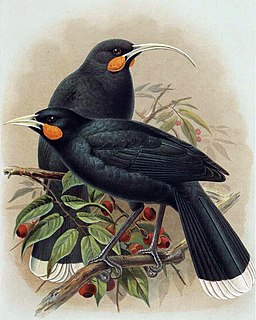
Callaeidae is a family of passerine birds endemic to New Zealand. It contains three genera, with five species in the family. One species, the huia, became extinct early in the 20th century, while the South Island kokako is critically endangered and may be extinct.

The biodiversity of New Zealand, a large island nation located in the southwestern Pacific Ocean, is varied and distinctive accumulated over many millions of years as lineages evolved in the local circumstances. New Zealand's pre-human biodiversity exhibited high levels of species endemism, but has experienced episodes of biological turnover. Global extinction approximately 65 Ma ago resulted in the loss of fauna such as non-avian dinosaurs, pterosaurs and marine reptiles e.g. mosasaurs, elasmosaurs and plesiosaurs. The ancient fauna is not well known, but at least one species of terrestrial mammal existed in New Zealand around 19 Ma ago. For at least several Ma before the arrival of human and commensal species, the islands had no terrestrial mammals except for bats and seals, the main component of the terrestrial fauna being insects and birds. Recently—since c. 1300 CE—a component has been introduced by humans, including many terrestrial mammals.
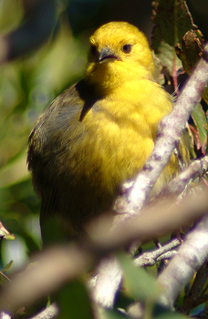
The yellowhead or mohua ; also known as Bush Canary) is a small insectivorous, passerine bird endemic to the South Island of New Zealand. Recent classification places this species and its close relative, the Whitehead, in the family Mohouidae.
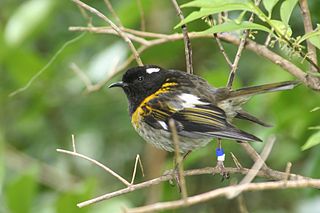
The stitchbird or hihi is a honeyeater-like bird endemic to the North Island and adjacent offshore islands of New Zealand. Its evolutionary relationships have long puzzled ornithologists, but it is now classed as the only member of its own family, the Notiomystidae. It became rare, being extirpated everywhere except Little Barrier Island, but has been reintroduced to three other island sanctuaries and two locations on the North Island mainland.

Paphies subtriangulata is a species of edible bivalve clam known as tuatua in the Māori language, a member of the family Mesodesmatidae and endemic to New Zealand. It is found on all three of the main New Zealand islands, buried in fine clean sand on ocean beaches.

The buff-banded rail is a distinctively coloured, highly dispersive, medium-sized rail of the rail family, Rallidae. This species comprises several subspecies found throughout much of Australasia and the south-west Pacific region, including the Philippines, New Guinea, Australia(where it is known as a Misery chicken), New Zealand, and numerous smaller islands, covering a range of latitudes from the tropics to the Subantarctic.
The New Zealand owlet-nightjar was a large species of owlet-nightjar formerly endemic to the islands of New Zealand. Fossil remains indicate the species was once widespread across both the North Island and the South Island. Despite a small number of reports of small owls being found in the 19th century that may have been New Zealand owlet-nightjars, the species is thought to have become extinct around 1200 AD.
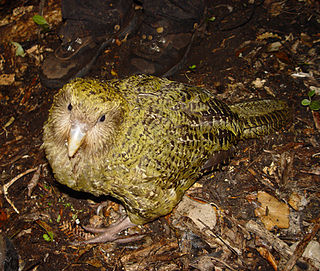
The birds of New Zealand evolved into an avifauna that included a large number of endemic species found in no other country. As an island archipelago New Zealand accumulated bird diversity and when Captain James Cook arrived in the 1770s he noted that the bird song was deafening.

The Pitt shag, also known as the Pitt Island shag or Featherstone's shag is a species of bird in the family Phalacrocoracidae. It is endemic to Pitt Island. Its natural habitats are open seas and rocky shores. It is threatened by habitat loss.

The Chatham shag, also known as the Chatham Island shag, is a species of bird in the cormorant and shag family, Phalacrocoracidae. It is endemic to the Chatham Islands of New Zealand. For a long time the species was placed in the genus Phalacrocorax; today it is mostly placed with the other blue-eyed shags of New Zealand and Antarctica in the genus Leucocarbo. Its closest relative is the Otago shag of South Island.
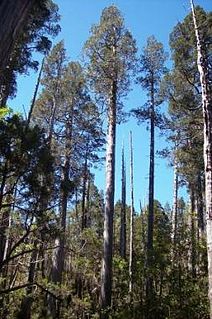
The Antarctic Floristic Kingdom, also the Holantarctic Kingdom, is a floristic kingdom that includes most areas of the world south of 40°S latitude. It was first identified by botanist Ronald Good, and later by Armen Takhtajan. The Antarctic Floristic Kingdom is a classification in phytogeography, different from the Antarctic ecozone classification in biogeography, and from Antarctic flora genera/species classifications in botany.

The Paleotropical Kingdom (Paleotropis) is a floristic kingdom comprising tropical areas of Africa, Asia and Oceania, as proposed by Ronald Good and Armen Takhtajan. Part of its flora, inherited from the ancient supercontinent of Gondwana or exchanged later, is shared with the Neotropical Kingdom, comprising tropical areas of Central and South America. Moreover, the Paleotropical flora influenced the tropical flora of the Australian Kingdom. The Paleotropical Kingdom is subdivided into five floristic subkingdoms according to Takhtajan and about 13 floristic regions. In this article the floristic subkingdoms and regions are given as delineated by Takhtajan.

Pecten novaezelandiae, common name the New Zealand scallop, is a bivalve mollusc of the family Pectinidae, the scallops. Its name is sometimes found misspelt as Pecten novaezealandiae.
The Chatham kaka or Chatham Island kaka is an extinct parrot species previously found on the Chatham Islands, New Zealand. The first individuals were thought to belong to the kaka, but detailed examination of the subfossil bones showed that they actually belong to a separate endemic species. The species became extinct within the first 150 years of the arrival of the Polynesians around 1550, long before any European settlers. No skins or descriptions are available.

The New Zealand goose is the common name given to the extinct genus Cnemiornis of the family Anatidae, subfamily Anserinae.

Cyclaxyra is a genus of cucujoid beetles in the family Cyclaxyridae. There are two described species in Cyclaxyra, found on the North Island, South Island, and Stewart Island of New Zealand.

Cyclaxyra politula is a species of cucujoid beetle in the family Cyclaxyridae. It is endemic to New Zealand, found on the North Island, South Island, and Stewart Island.















